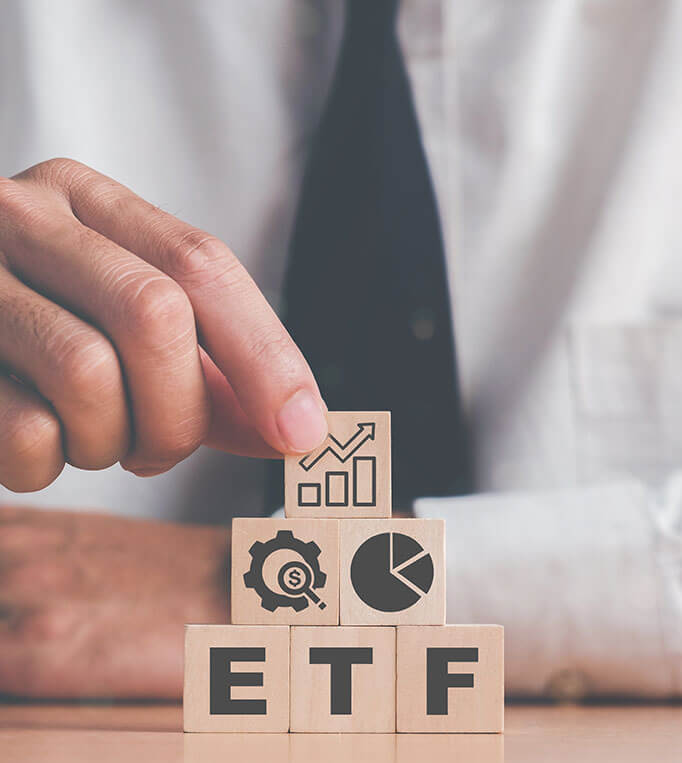ETFs have emerged as one of the most popular investments worldwide because they offer index-like returns at a low cost since they are passively managed.
Low cost: This is one of the biggest benefits. Passively managed funds have much lower fund management expenses and, therefore, offer higher returns than actively managed funds.
Ease of transactions: ETFs can be bought and sold like shares on the exchanges. Transactions are based on the current market price and not on end-of-the-day NAVs.
Diversification: Indexes like Nifty and Sensex represent the broader economy and comprise some of the best liquid stocks. An ETF offers you the same diversification that its underlying index does.
Returns: Over the long term, passive index investing tends to provide better returns.
JM Financial Services Limited offers you a one-stop destination to invest in a wide variety of ETFs, including index ETFs, debt ETFs, commodity ETFs, global ETFs, and currency ETFs.

ETF stands for exchange-traded fund. These are mutual funds, whose units can be bought and sold on the stock exchanges like shares of a company. They are typically passively managed, and their price mirrors an underlying index (such as Sensex or Nifty) or an asset (usually a commodity such as gold).
ETFs are passively managed funds. This means that ETFs do not have a fund manager who takes investing decisions. The portfolio of an ETF is based on an underlying index. For example, an ETF based on the Sensex will have a portfolio that mirrors the composition of the Sensex. The price of an ETF will move in tandem with its underlying index.
ETFs are traded on the stock exchanges. Unlike, your typical mutual fund, which you buy and sell based on NAV, an ETF is traded on market price like a stock. So, an ETF’s price fluctuates throughout a trading session.
You can invest in ETFs just as you invest in shares. You will need a demat and a trading account to invest in them.
An ETF’s NAV is calculated after every trading session. The total assets (less expenses) divided by the number of units or shares issued is the NAV of an ETF. The NAV of an ETF may differ from its market price.
Some key features of an ETF: they are traded on stock exchanges like shares, they are passively managed, they mirror an underlying (usually an index or a commodity), and they are low-cost funds since they are passively managed.
ETFs and index funds are both based on an underlying index such as Sensex or Nifty. The only difference between the two is that ETFs can be traded like stocks throughout a trading session, while index funds can be bought and sold only on the NAV, which is declared at the end of a trading session.





















